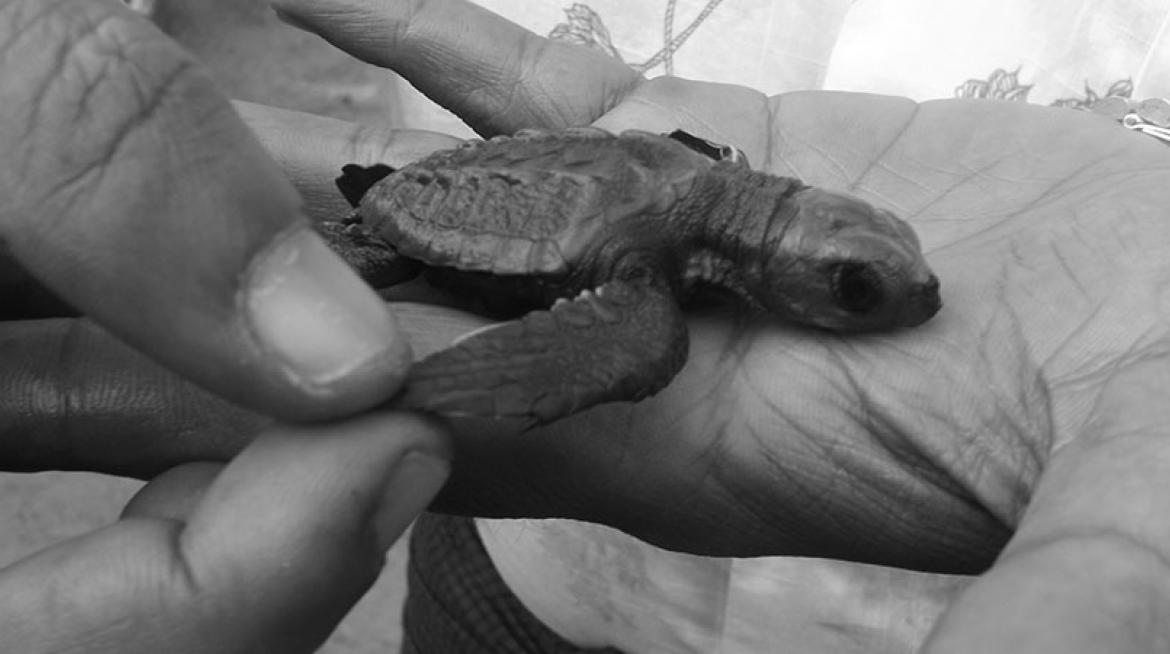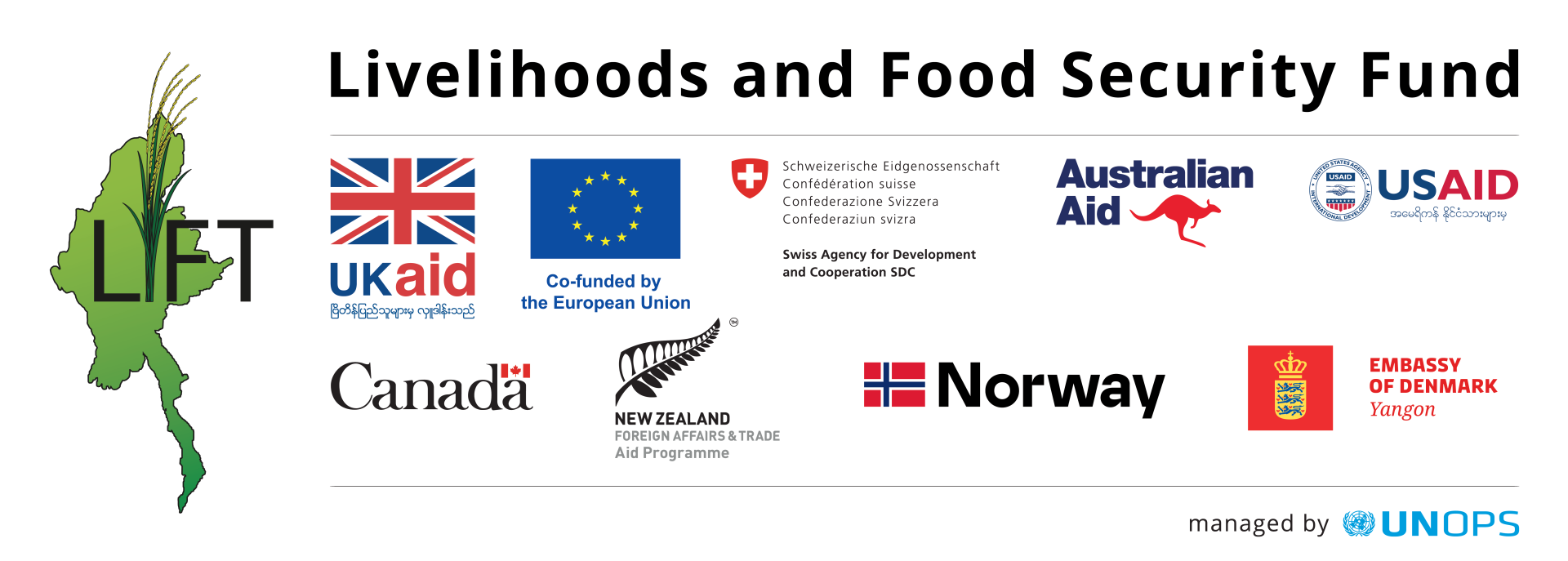
In southern Rakhine State, LIFT has funded two biodiversity hotspots under the Coastal Livelihood and Environmental Assets Restoration in Rakhine (CLEARR) project, which is implemented by the Myanmar Environment Rehabilitation-conservation Network (MERN).
“Every technician in the fishery and mangrove sectors will accept the fact that no mangrove equals no fish” said U Win Maung, CLEARR’s Project Manager. Nevertheless, mangrove forests are recognised as one of the most threatened ecosystems globally, and they are quickly disappearing in Myanmar. In parts of the Delta and Rakhine State they act as fish nurseries and also work to provide a barrier to salt intrusion on agricultural land. They protect land from storm surges and tsunamis - after Cyclone Nargis, areas with coastal mangroves were seen to have suffered less.
One of the biodiversity hotspots set up by CLEARR is in an area besides the Gwa creek, where the endangered mangrove species of Bruguiera hainesii is found.
 U Win Maung remembers the day when he identified the species and possibly its tallest specimen (pictured). “Having worked on mangroves for 20 years, I thought I knew all the mangrove species in Myanmar,“ he says. “But when I saw the big flowering tree from the boat, I knew it was different."
U Win Maung remembers the day when he identified the species and possibly its tallest specimen (pictured). “Having worked on mangroves for 20 years, I thought I knew all the mangrove species in Myanmar,“ he says. “But when I saw the big flowering tree from the boat, I knew it was different."
He presented the case at an international conference, and learned that this mangrove species is classified as critically endangered by the International Union for Conservation of Nature (IUCN).
“I explained to the villagers that, according to the IUCN’s list, there are just a few specimens left in the world: three trees in Singapore, a few in Papua New Guinea and Malaysia,” he continues. “This is unique. So we made the area into a biodiversity hotspot, where the villagers protect the area, and don’t allow the trees to be cut for firewood. The sense of ownership that the villagers have developed will work towards the sustainability of the initiative after the project ends.”
Under MERN’s guidance, the villagers created mangrove nurseries. They have registered 5,300 acres of mangrove as community forest with the Forestry Department. This means that it is collectively-owned by the local residents, who have the sole right to sustainably use the non threatened species for firewood. MERN also developed cash-for-work activities to clear the mangrove areas of obstructive trees and weeds. A school plantation has been set up in Ywarthikonewhere at the weekend, students and teachers visit the area by boat to plant mangroves trees, care for the plants and clear the weeds. All future earnings generated from the plantation will go towards the student's education.
The second biodiversity hotspot is a two-mile long nesting beach for the endangered loggerhead turtle near Kyeintali. MERN’s members had seen turtle’s eggs being sold in the market, since the villagers were unaware that the turtles are on the endangered species list.
Night patrols were set up on the beach, funded through the Village Conservation Committee (VCC), set up by CLEARR. VCCs work as local microfinance centres, providing low-interest loans in a revolving fund. The interest on loans is used for community purposes, and in Kyeintali it is used to provide torches and batteries for night patrols. Anyone taking out a loan is required to take part in the patrol, and they can earn an extra USD 15 if they find eggs and alert the Rakhine Coastal Region Conservation Association (RCA), who will relocate the eggs to a safe hatching place. In the first half of 2014, 20 hatchings took place, with an 80 per cent survival rate.
Awareness raising campaigns are teaching the locals to stop eating the eggs, and the project has won the support of township and district government. However, despite its success, RCA is seeing a decrease in the number of turtles coming in to lay their eggs, and fear that they are killed by fishing boats operating illegally within a 5 mile limit from the beach. Particularly dangerous to the turtles is the continued use of the leik kyauk fishing net, which is legally prohibited.
“Before, there were about 100 turtles a year coming to lay eggs on the beach, and this year only 14 to 15 turtles came in. In the coming ten years, they may become extinct,” says Zaw Min Htay, a volunteer with the RCA.
"What is needed is cooperation at local, state and international levels," says Dr. Maung Maung Kyi, Chairman of the RCA. “Local people need to stop eating turtle products; from the government side we need legal cooperation to enforce the laws, and at the international level we require coordinated protection for the turtles in their respective territories.”


